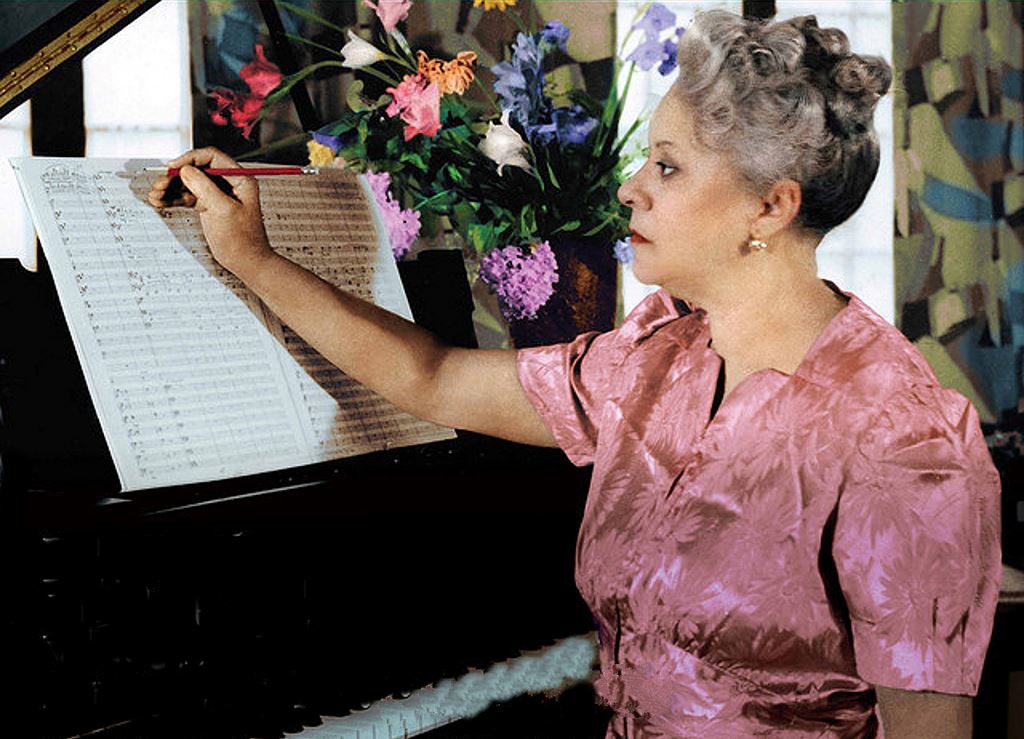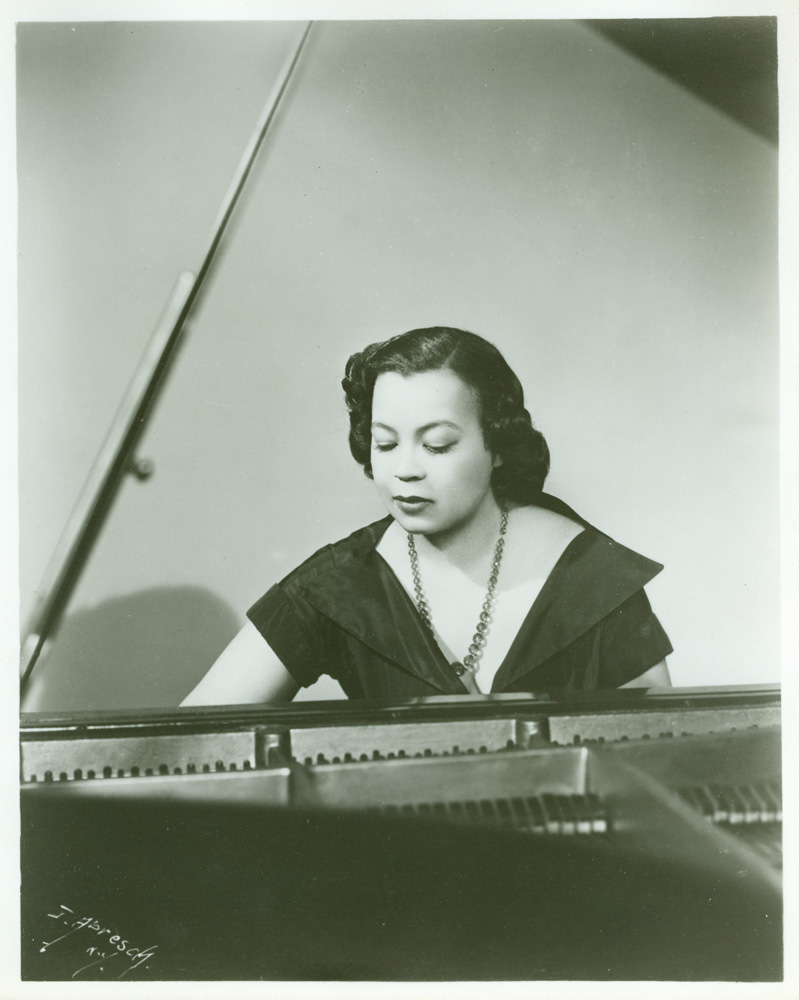Revival, Music of Price & Bonds

“It humbles you in a certain way because you realize that there are a lot of stories that are yet to be told, that should be told. Loving both of their music so much, it’s really an important mission for me to program and to share their music with as many people as I can, so that they have a voice in our time.” —Michelle Cann
Revival, Music of Price & Bonds
Michelle Cann’s debut solo piano recording, Revival, celebrates the vast legacy of Florence Price and Margaret Bonds, whose extraordinary music was either neglected in their lifetimes or abandoned after their deaths. Through stunning performances of Price’s prize-winning Piano Sonata in E minor, three of her sumptuous Fantasie nègre, and Bonds’s magnum opus for piano, Spiritual Suite, Cann does more than just honor her forebears.
Cann’s performances will have you wanting to sing along.
—John T.K. Scherch, WRTI
… it is gladdening to see the work championed here in a performance from Cann that is as subtle as it is exuberant.
…[Cann] possesses a pristine technical command of the keyboard, and is capable of transmitting in every note a surprising calm and beauty, today a rare gift.
Embedded in the Romantic idioms of these selections are the influences of folksong, blues, and spirituals, imbued with the unique compositional voices of these trailblazing women—it is the sound of the human spirit and of America, a Black America. Inspired by their fascinating stories and brilliant compositions, Cann’s deep connection and profound understanding of this music pervades her soulful interpretations of these works.Revival honors the genius of Price and Bonds, acknowledges the deep spiritual, political, and artistic significance of their innovative compositions, and expands our view of American classical music by illuminating the rich lineage of artists who forged its past and its future.
Michelle Cann

Acclaimed as a “pianist of sterling artistry” by Gramophone, called “exquisite” by the Philadelphia Inquirer, and praised as a “compelling, sparkling virtuoso” by the Boston Music Intelligencer, Michelle Cann is known for her dynamic and sensitively nuanced performances of classical piano repertoire. One of the defining features of her exceptional career has been an unwavering commitment to promoting, programming, and performing works of underrepresented composers.
It is this throughline that led Cann to record and release Revival.
Florence Price
Born on April 9, 1887, in Little Rock, Arkansas, to Dr. James H. Smith and Florence Irene Smith in the racially segregated era of Jim Crow, Florence Beatrice Price (née Smith) began her musical journey at age four when she played her first piano recital. By age 11, she had published her first composition, and following high school, where she was valedictorian of her class, she went on to study organ and piano at age 16 with mentor George Whitefield Chadwick at the New England Conservatory of Music.

After enduring a failed marriage and years of racial discrimination in the south, she moved her family to Chicago, where she forged a new life as an organist in silent film theaters and established herself as a composer.
Throughout Price’s lifetime, her compositions were often rejected by orchestras, and few publishing companies would print her music. It was not until 2009, when a couple discovered nearly 300 of her manuscripts in an Illinois summer home attic, that a renaissance of Price’s music was finally ignited.
-
Piano Sonata in E minor
Written in her forties, Florence Price’s Piano Sonata in E minor infuses elements of her heritage with European classical music traditions. Drawing inspiration from Romantic composers such as Sergei Rachmaninoff and Camille Saint-Saëns, this sprawling, three-movement work opens with an Andante-Allegro, featuring energetic piano passages that build in intensity. Price’s use of syncopated rhythms, polyrhythms, and harmony explore African American spiritual melodies that are manifested in different forms as the sonata proceeds.
Cann describes the second movement as one of “the most beautiful pieces of music I’ve ever played.”
This lush Andante movement in rondo form is a stirring expression of Price’s musical voice, one that is accompanied by luxuriant harmonies that ache with a sense of nostalgia. The use of chromaticism and unexpected modulations add to the movement’s emotional depth. The final movement, Scherzo: Allegro, is a lively, imaginative conclusion to the sonata, infused with themes from the first movement and featuring intricate runs and trills that demonstrate Price’s technical mastery and bring the work to a triumphant close.
-
Fantasie nègre Nos. 1, 2, and 4
On September 3, 1930, 17-year-old Margaret Bonds premiered Florence Price’s Fantasie nègre No. 1 in E minor at the 12th National Association of Negro Musicians convention. Not only did this well-received performance strengthen the recognition of Price as a composer of note, but it elevated the visibility of Bonds as a prodigious young talent to watch and was one of their earliest collaborations. This groundbreaking piece established a new genre and was the first of four fantasies she wrote to blend the classical music tradition with Negro spirituals and plantation songs. In Fantasie nègre No. 1, Price incorporated the melody of the beloved spiritual, “Sinners, Please Don’t Let This Harvest Pass,” into the score, with interludes that evoke both Brahms and Chopin.
In the remaining fantasies, all of her themes were stylistically based upon Black musical idioms, yet the tunes were solely composed by Price. Each of these innovative pieces features extended, improvisatory introductions, while the rhythms create a sense of tension and release. From its opening bars, the ambitious Fantasie nègre No. 2 in G minor introduces a distinctive call-and-response figure that evolves in four stages as the piece gathers to a dramatic finale.
The last of Price’s surviving essays for solo piano, Fantasie nègre No. 4 in B minor, was premiered on July 15, 1937, by pianist Marion Hall MacFadyen at a Composers Forum concert of the Federal Music Project in Chicago. This audacious and challenging work introduces a spiritual-inspired rhapsodic main theme, contrasted by a Jazz Age blues-hued melodic subject and an arpeggiated transitional passage reminiscent of the piano music of Robert and Clara Schumann. The final virtuosic minutes of the piece gather all the ingenious ideas Price has introduced throughout and compress them into a breathtaking 32-bar conclusion.
Margaret Bonds
Margaret Jeanette Allison Bonds was a composer, pianist, and arranger who drew inspiration from the spirituals, folksong, jazz, gospel, and blues music of the 1920s and ‘30s. Born in Chicago on March 3, 1913, Bonds studied the piano with her mother, Estella Bonds, at an early age. Bonds attended Northwestern University and The Juilliard School and became a close friend, pupil, and creative collaborator of Florence Price, her devoted mentor.

Throughout her lifetime, Bonds experienced the isolating pain of racism and misogyny, turning to the poetry of Langston Hughes—with whom she met in 1936 and developed a lifelong friendship—and her faith as solace, weaving these religious ideologies into her art.
The first Black musician in history to perform with the Chicago Symphony Orchestra, Bonds composed more than 200 works in her lifetime, though only 75 scores survived, only 47 of which were published while she was alive.
-
Spiritual Suite
Composed as a show-stopping closer for her solo recitals and performed as an inspirational statement of racial and cultural pride, Margaret Bonds’s dazzling Spiritual Suite was inspired by the concert encores of legendary Black vocalists Marian Anderson and Roland Hayes. Based on settings of traditional Negro spirituals (“Dry Bones,” “Peter, Go Ring Dem Bells,” and “Wade in the Water”) and infused with the idioms of gospel, jazz, and blues, this three-movement suite was drafted throughout the 1930s and 1940s. Although it became one of Bonds’s most celebrated and studied works, the rousing finale, “Troubled Water,” was the only movement to be published during her lifetime.
It was not until 2020, when Dr. Louise Toppin, a significant force in archiving the repertoire of Black composers, edited all three movements of the suite and had them printed as part of the Videmus African American Art Song Series, that “Valley of the Bones” and “The Bells” became available for future generations of pianists to rediscover and bring to life—a fitting revival to one of the most significant classical artists of the twentieth century.